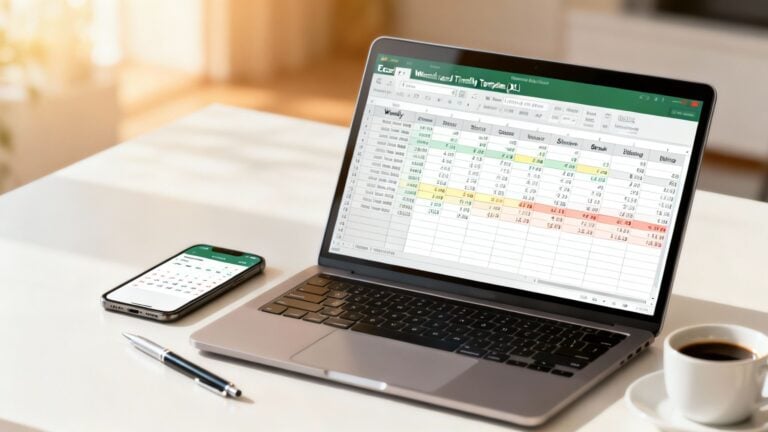When you’re juggling competing deadlines, it’s easy to confuse project management with project delivery management. Nonetheless, while project management covers the overall process of completing a project, project delivery management focuses specifically on how to deliver the project on time. This article will help you gain a firm grasp of project delivery management, enabling faster and smoother project completion. You’ll learn about project delivery management methods, phases, tips, and tools, so you can improve your project time management skills and reduce stress on your next project.
One tool that will help you master project delivery management is Tackle’s automatic time tracking software. With Tackle, you can easily track how much time you and your team spend on different project tasks. This data will help you understand how to improve your project delivery management processes and meet your next deadline with ease.
What is Project Delivery Management?

Project Delivery Management is the discipline of steering a project from concept to completion with a clear focus on:
- Time
- Cost
- Quality
It’s not just about hitting deadlines; it’s about ensuring that every phase of the project is:
- Executed efficiently
- Aligned with stakeholder expectations
- Delivered with value
At its core, project delivery management involves planning, organising, and controlling all resources, people, tools, processes, and budgets, to achieve the project’s objectives. This includes:
- Setting clear goals
- Creating detailed timelines
- Assigning responsibilities
- Managing risks
- Maintaining transparent communication across all stakeholders
What makes delivery management distinct is its practical, outcome-oriented nature. It’s not just about managing tasks; it’s about orchestrating a seamless path from initiation to handover, ensuring that the final deliverables:
- Meet quality standards
- Satisfy stakeholders
- Serve the intended purpose
When done well, project delivery management becomes the backbone of a reliable and repeatable project execution process. It’s the framework that enables organisations to translate strategic ideas into successful, measurable outcomes consistently.
Related Reading
- Is Time Tracking Effective
- How to Keep Track of Projects at Work
- Time Tracking Best Practices
- Project Progress Tracking
4 Types of Project Delivery Methods

1. Design-Bid-Build (DBB): The Traditional Approach to Project Delivery
The Design-Bid-Build method is the most conventional approach to project delivery. This method organises the project into three sequential phases:
- Design
- Bidding
- Construction
Clearly Defined Roles
First, the design phase is completed in its entirety. Next, a competitive bidding process occurs to select a contractor. Finally, the construction phase begins. This method ensures a clear separation of responsibilities between the designer and the contractor, allowing for detailed planning to begin before construction commences.
Nevertheless, it can be time-consuming and less flexible when it comes to incorporating changes once the project is underway.
2. Design-Build (DB): A Fast and Flexible Project Delivery Method
In the Design-Build method, both design and construction are handled under a single contract with one entity. This streamlined approach fosters collaboration between designers and builders from the outset, often reducing project timelines and encouraging innovation.
By consolidating responsibility, Design-Build can improve communication, reduce conflicts, and provide faster delivery; though, it may limit the owner’s control over design decisions compared to Design-Build-Bid-Build (DBB).
3. Construction Management at Risk (CMAR): Effective for Complex Projects
Construction Management at Risk, or CMAR, involves hiring a construction manager early in the design process. The construction manager acts as a consultant during the pre-construction phase, offering input on cost, schedule, and buildability. They later assume the role of general contractor and deliver the project at or below a Guaranteed Maximum Price (GMP).
This method is particularly effective for managing cost uncertainty and engaging expert construction insights during the design phase, making it a popular choice for complex or high-risk projects.
4. Integrated Project Delivery (IPD): A Collaborative Project Delivery Approach
Integrated Project Delivery is a collaborative approach that involves the owner, designer, contractor, and sometimes key subcontractors, all working under a single shared contract. All parties share risks and rewards in proportion to the project’s overall success.
The Collaborative Edge of IPD
IPD promotes transparency, innovation, and early problem-solving by aligning incentives and encouraging close collaboration throughout the project. While it requires a cultural shift and trust among all stakeholders, it can lead to highly efficient outcomes and improved project performance.
Main Phases of Project Delivery

Initiation: Setting the Foundation for Success
The initiation phase establishes the foundation of the project. It involves defining the:
- Purpose
- Scope
- Key objectives
Aligning Vision and Value
During this stage, stakeholders are identified, requirements are gathered, and the project’s feasibility is assessed. A strong start here ensures that everyone is aligned from the outset and that the project is justified in terms of business value. Thorough project requirements management is critical at this stage.
Clearly understanding and documenting what success looks like helps prevent scope creep and miscommunication later.
Planning: Outlining the Roadmap
Once the project is approved, detailed planning begins. This phase outlines how the project will be executed, monitored, and closed. It involves defining:
- Tasks
- Timelines
- Budgets
- Resources
- Communication plans
- Risk mitigation strategies
Effective project cost management is critical to ensure the budget is realistic and sustainable throughout the project’s lifecycle.
Execution: Bringing the Plan to Life
The execution phase brings the plan to life. Teams begin working on their assigned tasks and producing the actual project deliverables. Coordination, communication, and collaboration are key to keeping everything on schedule and to the desired standard.
Throughout execution, alignment with the original plan is maintained through ongoing supervision, task adjustments, and real-time feedback loops.
Monitoring and Controlling: Keeping Everything on Course
Running in tandem with execution, this phase ensures that the project stays on course. Project managers track progress, measure key performance indicators, and identify variances from the plan. When issues arise, corrective actions are taken to realign the project with its original goals.
Effective project tracking and control prevent delays, cost overruns, and quality issues, and help reduce risk before it becomes a blocker.
Closing: Finalising the Project
The final phase is where the project is formally completed. Deliverables are handed over to the client or end-users, contracts are finalised, documentation is wrapped up, and performance is reviewed. A formal closure process ensures nothing is left unfinished.
Capturing lessons learned during this phase provides valuable insights for improving future project delivery processes.
Intelligent Insights for Optimised Time
Tackle revolutionises time tracking through seamless calendar integration, eliminating the need for manual logging. Our platform automatically captures and categorises your time, providing actionable insights through intuitive dashboards and reports. We’ve built everything you need into one seamless package:
- An intelligent tagging system that works your way
- AI-powered automation to handle the tedious stuff
- Flexible reporting tools to track what matters
- Smart time capture right in your browser
Empowering Strategic Time Management
Trusted by teams at Roblox, Deel, and Lightspeed Ventures, Tackle helps executives, team leaders, and customer-facing professionals understand and optimise their time allocation. Simply connect your Google or Outlook calendar, set up custom tags and automations, and gain valuable insights into how your team spends their time.
Optimise Decisions with Tackle’s Time Intelligence
Whether you’re tracking strategic initiatives, measuring team efficiency, or ensuring resource optimisation, Tackle transforms time monitoring from a chore into a powerful decision-making tool.
Start using our automatic time tracking software for free with one click today!
Related Reading
- Client Project Management
- Best Project Management Software for Creative Agency
- Agency Resource Management Software
- Best Agency Project Management Software
- Monday.com vs Basecamp
- Monday.com vs Jira
- Creative Agency Resource Management
6 Tips for Successful Project Delivery Management

1. Define a Clear Scope Statement
Every project begins with a vision. A Scope Statement defines this vision. It articulates the project’s objectives, deliverables, assumptions, constraints, and acceptance criteria. This document helps all stakeholders align expectations before work begins. Without clarity at this stage, project teams risk:
- Scope creep
- Misaligned expectations
- Inefficiencies downstream
A solid scope also ensures all stakeholders are on the same page before execution begins.
2. Conduct Thorough Stakeholder Analysis
Understanding who your stakeholders are and what they care about is critical. A stakeholder analysis helps:
- Identify key individuals and groups.
- Assess their influence
- Determine the best ways to communicate with them.
Tailoring engagement strategies to meet stakeholder needs ensures better buy-in, reduces friction, and facilitates smoother decision-making throughout the project.
3. Build and Communicate a Robust Project Plan
A comprehensive project plan acts as the blueprint for delivery. It outlines the tasks, timelines, dependencies, and resources required to reach the finish line. Nevertheless, even the best plan is only effective if it’s communicated effectively.
Sharing the plan with the whole team and updating it regularly keeps everyone aligned and accountable, reducing confusion and increasing transparency.
4. Review and Maintain the Work Breakdown Structure (WBS)
The Work Breakdown Structure transforms a high-level project into detailed, manageable components. Reviewing the WBS regularly ensures that tasks are properly organised, responsibilities are clearly defined, and dependencies are managed. A well-maintained WBS also makes it easier to:
- Track progress
- Allocate resources efficiently
- Make adjustments when needed
5. Track Actions, Issues, and Risks Continuously
Project environments are dynamic; unexpected issues and risks are inevitable. That’s why maintaining an up-to-date log of actions, problems, and risks is essential. This record serves as a living document that:
- Captures decisions
- Tracks pending tasks
- Outlines mitigation strategies
Regular reviews of this log help teams stay proactive, not reactive, and contribute to smoother execution and stronger outcomes.
6. Motivate Your Project Team Members
Skilled project managers know there are times when Waterfall diagrams, Gantt charts, and work breakdown structures aren’t enough to get your team over the finish line. These things help. But the best teams have something else in their favour — motivation. Gallup research indicates that motivated and engaged employees make fewer mistakes.
Cultivating a Motivated and Productive Team
They’re also 17% more productive than their less motivated peers. Of course, project managers don’t have complete control over employee motivation. Nevertheless, there are several steps you can take to boost motivation and employee engagement. Recognise the effort and achievements of your team, praising them publicly on shared communication channels.
Nurturing Engagement and Performance
Create a supportive culture where all people and their contributions are valued and where work-life balance is respected. Reduce friction by providing teams with the necessary tools and resources to communicate and complete tasks effectively. Don’t micromanage — trust teams to get the work done and encourage team members to share ideas and suggestions.
Essential Tools for Project Delivery Management

Tackle stands out for its automatic time tracking, which integrates directly with your calendar, eliminating the need for manual logging. It’s beneficial for delivery managers who want insights into how time is spent across:
- Strategic initiatives
- Client work
- Internal tasks
Other options, such as Harvest or Clockify, are popular for teams that want manual control with lightweight interfaces, especially when working across billable and non-billable time.
Project & Task Management: Keeping Projects on Track
Effective project delivery hinges on knowing who’s doing what, by when. Platforms like Asana and ClickUp offer robust visual task tracking, custom workflows, and automation that support both agile and waterfall methodologies. Jira is ideal for technical and software teams, particularly those using Scrum or Kanban methodologies.
Trello, while more lightweight, works well for simple task boards and visualising smaller projects. These tools help teams stay aligned on deliverables, dependencies, and deadlines.
Collaboration & Communication: Preventing Silos and Keeping Teams Aligned
Clear communication is critical throughout every phase of delivery. Tools like Slack (for real-time messaging and quick feedback loops), Microsoft Teams (especially when integrated with Office 365), and Notion (for collaborative documents and shared knowledge bases) ensure that conversations, documentation, and decisions don’t get lost in email threads or spreadsheets.
Document & File Management: Centralising Files for Easy Access
Centralizing files and ensuring the right stakeholders have access is essential. Tools like Google Workspace (Docs, Sheets, Drive), Microsoft OneDrive and SharePoint Dropbox Business help keep version control clean and enable easy sharing and feedback, especially when you’re collaborating across departments or with clients.
Progress Monitoring & Reporting: Keeping Stakeholders Informed
Delivery managers need to measure what’s working and spot issues early. Tools like Tackle for time analytics and dashboard reporting, Power BI or Tableau for more advanced visualization and reporting, and Monday.com for real-time project dashboards allow stakeholders to stay informed and project managers to back decisions with data.
Crafting a Comprehensive Project Delivery Ecosystem
There’s no one-size-fits-all solution, but combining the right mix of tools ensures visibility, control, and flexibility throughout your delivery process. Tackle gives you time intelligence, while the following platforms cover the rest of the delivery lifecycle. These include:
- Asana
- Slack
- Power BI
The key is to choose tools that integrate well, fit your team’s workflow, and help you deliver successful projects without unnecessary friction.
Start Using Our Automatic Time Tracking Software for Free with One Click Today
Tackle revolutionises time tracking through seamless calendar integration, eliminating the need for manual logging. Our platform automatically captures and categorises your time, providing actionable insights through intuitive dashboards and reports.
Tackle’s Integrated Features
We’ve built everything you need into one seamless package: an intelligent tagging system that works your way, AI-powered automation to handle the tedious stuff, flexible reporting tools to track what matters, and smart time capture right in your browser.
Trusted by Industry Leaders
Trusted by teams at Roblox, Deel, and Lightspeed Ventures, Tackle helps executives, team leaders, and customer-facing professionals understand and optimise their time allocation. Simply connect your Google or Outlook calendar, set up custom tags and automations, and gain valuable insights into how your team spends their time.
From Tracking to Strategic Advantage
Whether you’re tracking strategic initiatives, measuring team efficiency, or ensuring resource optimisation, Tackle transforms time monitoring from a chore into a powerful decision-making tool.
Start using our automatic time tracking software for free with one click today!
Related Reading
- Microsoft Project vs Trello
- Monday vs. Asana
- Monday.com Competitors
- Jira vs Basecamp
- Basecamp Competitors
- Bonsai Alternatives
- Asana Alternative
- Trello Alternative



